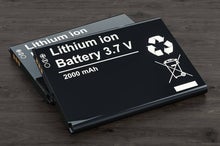Background
Vast interest in mobile electrification, largely driven by the popularity of electric vehicles (EVs) have intensified demands for lithium‐ion battery (LIB) production. As such, up to four million metric tons of LIB waste from EV battery packs could be generated from 2015 to 2040. LIB recycling directly addresses concerns over long‐term economic strains due to the uneven geographic distribution of resources (especially for Co and Li) and environmental issues associated with both landfilling and raw material extraction. However, LIB recycling infrastructure has not been widely adopted, and current facilities are mostly focused on Co recovery for economic gains. This is because (a) recycling plants must focus on recovering older LIBs that are now reaching the end of their lifespan and (b) cobalt is by far the most valuable metal in LIBs and is the primary driver for profitability in recycling. This incentive will decline due to shifting market trends from LiCoO2 toward cobalt‐deficient and mixed‐metal cathodes (eg, LiNi1/3Mn1/3Co1/3O2).
Description of the invention
Current battery recycling methods only focus on how to recycle useful elements from the cathode materials of aged batteries and ignore to recycling other materials. Waterloo researchers have developed a novel method for recycling strategies to recover metals in mixed‐metal LIB cathodes and comingled scrap comprising different chemistries by hydrometallurgical processes that can meet this criterion, while also requiring a low environmental footprint and energy consumption compared to pyrometallurgy.
Advantages
This Li-ion Battery recycling technology accomplishes complete recycling of a battery system. Not only can cathode materials be recycled but the used acid and base leachate is recovered to be used further in the chemical treatment process and thus represents an environmentally friendly and reduced cost approach. Following pre-treatment to separate the cathode from other battery components, the active material is dissolved entirely by reductive acid leaching. A complex leachate is generated, comprising cathode metals (Li+, Ni2+, Mn2+, and Co2+) and impurities (Fe3+, Al3+, and Cu2+) from the current collectors and battery casing, which can be separated and purified using a series of selective precipitation and/or solvent extraction steps. Alternatively, the cathode can be resynthesized directly from the leachate.
Potential applications
Full recovery of Battery elements such as Li, Co, Ni, Mn and resynthesis of cathode materials, and separation of impurities such as (Fe3+, Al3+, and Cu2+) from current collectors.

Reference
10137
Patent status
US Patent application # 63/480,679
Filed on January 19, 2023
Stage of development
Proven Prototype &
Ongoing Development
Contact
Scott Inwood
Director of Commercialization
Waterloo Commercialization Office
519-888-4567, ext. 43728
sinwood@uwaterloo.ca
uwaterloo.ca/research